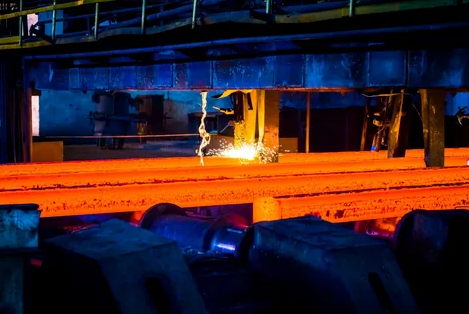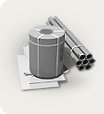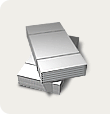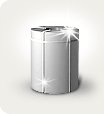Last week's announcement of more than 6 Mtpa of new direct reduced iron (DRI) production capacity and five new electric arc furnaces (EAFs) by the early 2030s shows that conditions are becoming increasingly favorable for low carbon steel production .
By 2033, the German steelmaker Salzgitter will fully switch to DRI-EAF steel production based on hydrogen and renewable energy sources. By the end of this year, he will provide projects for the construction of industrial facilities.
ArcelorMittal announced additional EAF and EAF capacity in France, including a 2.5 Mtpa EAF facility at Dunkirk and an EAF plant at Fos-sur-Mer that will be fed with scrap, requiring a total investment of 1 €.7 billion (US$1.94 billion). ). Thus, the plant's overall plans for the production of DRI for 2030 will be approximately 10.8 million tons /year, including projects in Spain, Belgium, Germany and France.
Swedish steelmaker SSAB announced last week that it would do the same, postponing plans to increase EAF capacity by nearly 3 Mtpa at Luleå, Sweden, and Raahe, Finland to 2030-45 by 2030.
ETS phase-out stimulates decarbonization
The timing of steel producers' plans for decarburization suggests that EU carbon cost policies are having the desired impact on greener steel production. While only pilot hydrogen-based steel projects are in operation so far, several industrial projects are scheduled to start around 2026 when the ETS-CBAM transition begins, with over 30 Mt planned by 2033, after the exit phase should be completed in 2030.
The phase-out of free allowances under the EU Emissions Trading Scheme (ETS) and the introduction of the Carbon Frontier Adjustment Mechanism (CBAM) during 2026-2030 theoretically protects EU mild steel production while removing incentives for steelmakers to cut costs by continuing to use coal or gas as an energy source. And the threat of paying more than 80 euros per tonne of carbon is an important incentive for steel producers in the EU to decarbonise. But the European steel association Eurofer argues that the EU should continue to provide free emissions throughout the ETS-CBAM transition phase to reduce the carbon costs that steelmakers will bear, along with the significant investment costs of reducing emissions by 30 percent by 2030. , according to Eurofer estimates. will be about 25 billion euros. "
Intersectoral relationships are key
The EU plans to have 6 GW of renewable hydrogen electrolysers by 2024 and 40 GW by 2030, with 40 GW of products available for import from outside the EU by 2030. But partnerships with companies in the upstream and downstream sectors have become defining factors for steelmakers. viability assessment of DRI-EAF hydrogen-based steelmaking.
Salzgitter and Danish energy supplier Orsted are aiming to create a circular supply chain in which Salzgitter will supply steel produced from renewable sources, mainly for the construction of wind farms, and Orsted will supply renewable (wind-generated) energy, as well as return parts of windmills to Salzgitter as low CO2 scrap metal at the end of their service life. The company intends to increase the amount of scrap used by 50% to 3 million tons per year by 2033. From 2026, Salzgitter will also supply low-CO2 steel to all of BMW's European factories.
ArcelorMittal recently increased its investment in the renewable energy sector with $100 million in sustainable energy-focused investment fund Breakthrough Energy and $5 million in Israel's H2Pro, a company that developed E-TAC (electrochemical - thermally activated chemical) technology that splits water into hydrogen and oxygen in a process similar to electrolysis.
For SSAB, the abundance of hydro and wind power in northern Sweden played an important role in enabling the steelmaker to fully convert to EAF production using renewable energy over the next eight years, as did its partnership with iron ore miner LKAB and energy supplier Vattenfall. .
Further progress by steel producers in forming supply or distribution partnerships could encourage further decarbonization commitments in the near future. German steelmaker Dillinger-SHS has entered into an initial agreement with engineering firm Paul Wurth and steelmaker Liberty to build a 2mtpa direct reduction plant, including 1GW of hydrogen electrolysis capacity at Dunkirk. Produce
Subscribe to news 
Metallurgy news
- Today
11:00 Artificial intelligence has become a working infrastructure today - it speeds up analytics, simplifies the preparation of materials, and helps build stronger strategic thinking. - 06 December 2025
13:00 US steel giant Nucor raised dividend payments by 1.8% 10:00 From nuclear energy to medicine: where is zirconium used and how many of its reserves are there in Russia? 00:00 Brazilian pig iron exports decline in October - 05 December 2025
21:00 The value of exports of steel products from France in January-September 2025 decreased by 3.5 percent 21:00 Hashima is the ghost island of Japan 20:00 The cost of imports of steel products to France in January-September 2025 decreased by 10.7 percent 20:00 Assofermet: Italian scrap metal market stable in November, with some signs of recovery
Publications
06.12 Stone Island: technology, style and uniqueness in every detail 04.12 How Smart Shoppers Reduce Costs: The Rise of Deal-Driven Online Buying 04.12 Spare parts for European commercial vehicles 03.12 Sports news and analytics: how interest in sports is generated in the world 03.12 Fitness Sofia: space for health and strength






